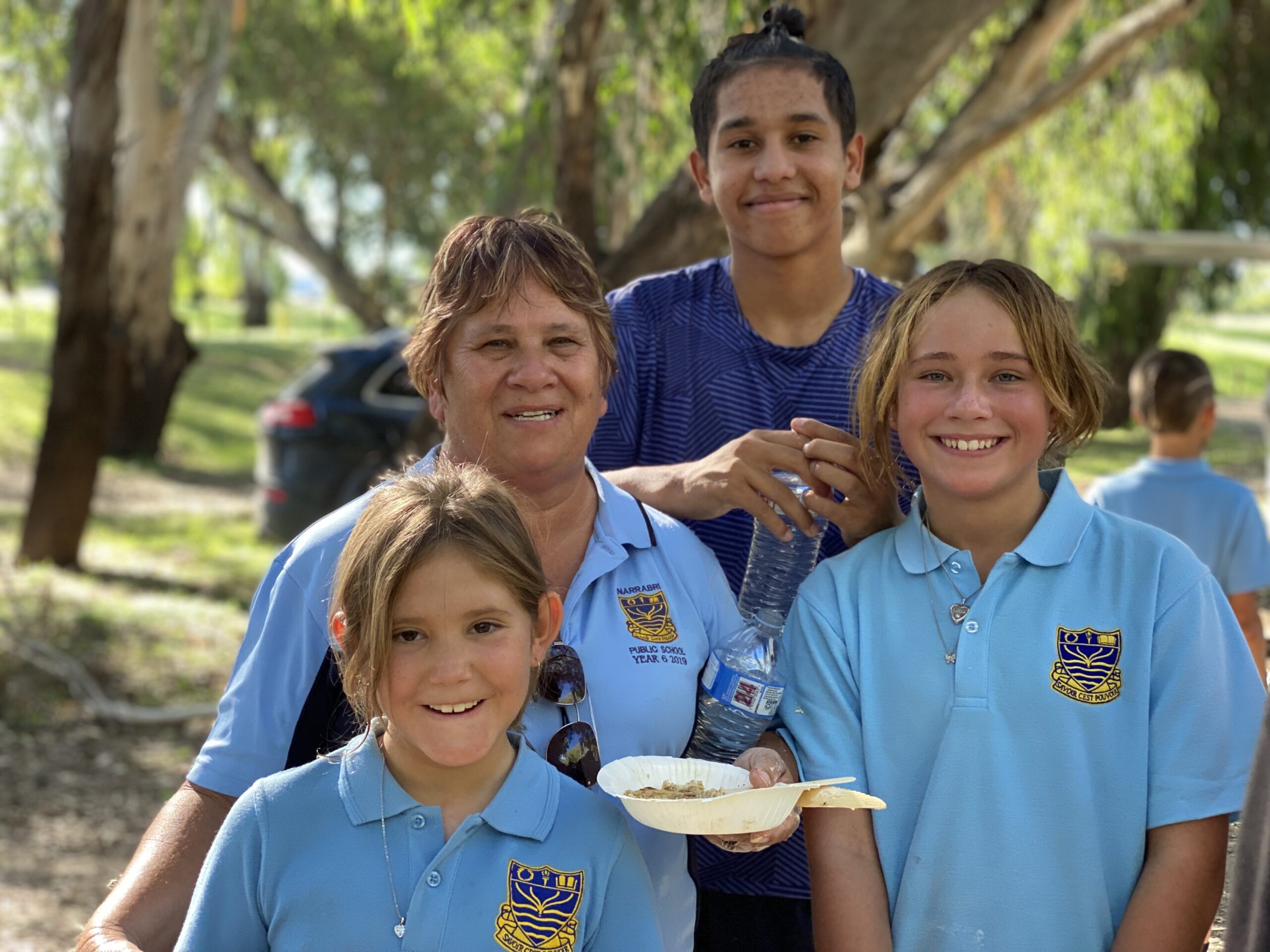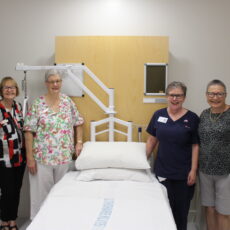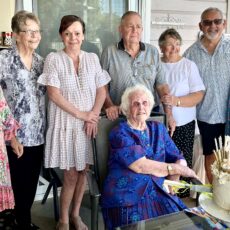A special harvest with a traditional twist was underway at the University of Sydney’s Llara farm recently, which is located on Gomilaroi country.
Visitors, local Indigenous representatives, community members and professionals with an interest in the native grass grains industry were invited to attend the knowledge sharing event.
Attendees didn’t just learn about the promising future of the industry; they also gathered their own grains from native millet (guli) and Mitchell grasses (ganalay), and the grains were later used in the making of johnny cakes at a cook-up held under the shade of trees at Cameron Park near Narrabri Creek.
The from paddock to plate experience was part of a collaboration between local Indigenous people, Indigenous social enterprise Black Duck Foods, the University of Sydney’s Indigenous Grasslands for Grain project, and Agrifutures.
Black Duck Foods has a vision to re-develop traditional food growing and country management processes for the economic benefit of Indigenous people, ensuring sustainable pathways for employment and enterprise opportunities that are culturally appropriate and equitable.
Managers and researchers from Black Duck Foods spent three days in the Narrabri region, discussing the revival of ‘Australia’s original grain economy’ and they emphasised the need for First Nations people to take the lead.
The group hopes the resurrection of ‘Australia’s original agricultural economies’ will restore landscape-scale regenerative food production across the nation to heal country, sequester carbon, protect biodiversity, grow nutritionally superior food, and provide First Nations people with culturally empowering economic development.
As well as harvesting grains by hand, Black Duck Foods and Sydney University representatives demonstrated how their mechanical brush harvesters operate.
Gomilaroi community elder Les Knox attended the gathering because he believes native grains offer huge health benefits and he wants to learn more about how to develop an enterprise.
“I wanted to come out today to have a look at some of the machinery they used to harvest grains because I want to look at starting up a business, which would put Narrabri as a whole on the map,” Mr Knox told The Courier.
“It’s not just for me, it’s for the town because it’s a great little shire we live in.
“I would like to see more people get involved and all the restaurants, get them involved with native grains,” he said.
“In the old days they were very healthy, there were no additives.
“They were lean as, not an ounce of fat on them, it was all from the bush tucker they were eating – it was great.”
Readers would be familiar with the brilliant work of Sydney University’s Planting Breeding Institute in Narrabri and its involvement in native grass grain projects, which have seen Indigenous knowledge and agricultural science join forces to help support a renaissance in Aboriginal agriculture in western NSW.
Dr Angela Pattison has led research projects assessing the best ways to support the native grain industry, and she has worked side-by-side with Indigenous people including Gomeroi woman and technician Kerrie Saunders.
They are two of the people working on the current Indigenous Grasslands for Grain project, which is also exploring the commercial opportunities for ancient grains.
The project aims to bring together cross-disciplinary experts to re-create the native grain production system, which sustainably produced food for people for thousands of years in Australia’s variable climate and soils.
Species include Mitchell grass, purslane, native millet, and other plants found in grassland and open woodland ecosystems which are known to have made highly nutritious ‘bush breads’ and similar products.
Grains are being grown in various field trials at a hectare scale, food production is being quantified, and seeds are tested for nutritional value.
“It’s so much fun working on this project,” said Dr Pattison.
“Aunty Kerrie and I joke around about being ‘Team Praction’ – combining our diverse training and backgrounds together in ‘practical actions’.
“The combination of deep knowledge from local Indigenous people and newer knowledge from modern agriculture, supported by industry in the form of Agrifutures and other partners, is unlocking something with its own momentum.”
Ms Saunders brings a wealth of knowledge and experience to the project, and she’s even established her own business Yinarr-ma – meaning ‘women of known information’, it offers bushwalking and bushfood tours.
“The Aboriginal culture is the oldest living culture in the world and the reason we survived for so long was because of the food we ate,” Ms Saunders told The Courier.
She said spending the morning with visitors sharing cultural knowledge while they gathered and harvested native grass grains was “empowering”.
“People have come to have a yarn, to talk to people, you’re out doing exercise – it’s a beautiful thing to do,” she said.
“It makes you feel like a proud Aboriginal woman to know these skills.
“It’s good for your wellbeing.
“Not being connected to the land can lead to social dysfunction.
“It’s very important that First Nations people are connected.”
Ms Saunders said support for the revival of ancient grains was “changing people’s lives for the better”.
The nutritional value and benefits of native grains have gained attention and created great interest in the project, as people grow more and more conscious of where their food comes from and the origin of what they’re putting in their mouths.
Kim Bell-Anderson is an Associate Professor based at Sydney University and her focus on nutrition is what inspired her to travel to the region for the event.
“It’s fantastic, it’s such a great story that this is all being rediscovered, and we haven’t lost it,” she said.
“I feel that we evolve on foods, wherever we came from in the world – we evolve on the foods of our geography and that shapes our genes, and our genes can also shape how we metabolise the food.
“So, bringing Indigenous people back to the food that they evolved on has huge potential for healing and hopefully replacing some of the fast processed food that western society has created for cheapness and for long-shelf life.
“What we’re trying to do in the future is to co-design research with Indigenous people and do it for the best outcomes for them – help them lead it and give them all the support they need.”
Associate Professor Bell-Anderson said it was a wonderful experience to be involved in the harvest, cooking of johnnycakes, and sharing stories and experiences with other attendees.
“I love being out here, I love the big sky.”
To order photos from this page click here




